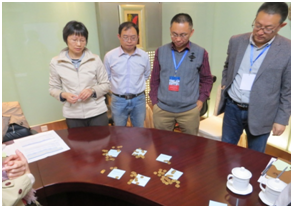Impressions on LinkTADs' EU-China cooperation in the second year
As coordinator of WP3 of the LinkTADs project, I really enjoyed the second year of the project. It was really nice to attend the workshop in Qingdao where we used participatory methods to identify future potential collaborations on animal and zoonotic diseases. For most participants it was the first time to use these kind of methods and the mix of surprise and interest was great. Some colleagues even claim that they will use these participatory methods to stimulate the discussions in their research teams. Giving to everyone the opportunity to participate and to give her/his opinion through “post-it” grouping and ranking or coin pilling was an effective way to support discussions. The concept notes drafted during this workshop and finalized later in 2015 are a good basis to develop project proposals together.

Another satisfaction is the good synergy between LinkTADs WP3 trainings and the Chinese FETPV program. Organising the LinkTADs field epidemiology training as part of the training of trainers in the CFETPV program made a lot of sense and really increased the impact of the project. We are sure it will be the same in 2016 with the WP3 analytical epidemiology training that will be again imbedded in the CFETPV program.

Overall, the project is going well and one of the best sign of its success is the beginning of this new project on Japanese encephalitis epidemiology funded by the Chinese Ministry of Science and technology, led by Shanghai Veterinary research Institute (SHVRI) and involving SVA and CIRAD. At CIRAD, we had no collaboration with SHVRI before LinkTADs and it is a great opportunity to work with them, our knowledge in epidemiology is really complementary to their competencies in laboratory sciences, and it is one of the main goal of LinkTADs to bring together Chinese and European scientists while bridging the gap between epidemiology and laboratory sciences.
